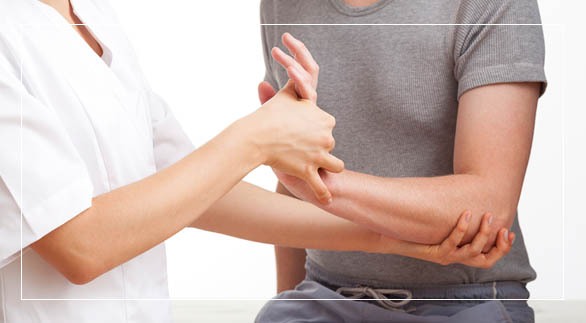Paralysis – Types, Causes, and Treatment
Paralysis is the point at which you can't move certain pieces of your body in the wake of something that turns out badly with their association with your cerebrum. It comes in a wide range of structures and can be brief or perpetual or even go back and forth.
Somebody who is disabled due to a birth deformity or unexpected damage regularly can't feel or move anything at all in their influenced body parts. Somebody deadened by an ailment, similar to numerous sclerosis (MS), may feel shivering or muscle shortcoming.
Paralysis can cause issues with bloodstream, breathing, how well your organs work, talking or gulping, sexual reactions, or controlling the desire to go to the restroom, contingent upon where you're incapacitated and how awful it is. Doctor Amit Bindal provides the best solution to this problem.

Different types of Paralysis
- Complete Paralysis is the point at which you can't move or control your incapacitated muscles by any means. You additionally will most likely be unable to feel anything in those muscles.
- Fractional or inadequate Paralysis is the point at which, despite everything, you make them feel in and conceivably power over your deadened muscles. This is at times called paresis.
- Limited Paralysis influences only one explicit territory, similar to your face, hands, feet, or vocal ropes. Summed up Paralysis is progressive across the board in your body and is assembled by the amount of your body is influenced.
The sort typically relies upon where your cerebrum or the spinal line is harmed.
- Monoplegia is a sort of summed up Paralysis that influences only one appendage.
- Diplegia influences a similar territory on the two sides, as the two arms, the two legs, or the two hands of your face.
- Hemiplegia influences only one side of your body and is generally brought about by a stroke, which harms one side of your mind.
- Quadriplegia (or tetraplegia) is the point at which each of the four appendages is incapacitated (at times along the specific organs).
- Paraplegia is Paralysis starting from the waist.
The secured disorder is the rarest and most dangerous type of Paralysis, where an individual loses control of every one of their muscles, except for the ones that control their eye developments. You should immediately go for paralysis patient treatment.
How does Paralysis happen?
Paralysis is usually caused because of harm in the sensory system, especially the spinal string. Other key activating components of Paralysis are stroke, poliomyelitis, and injury alongside nerve damage, cerebral Paralysis, ALS, fringe neuropathy, Guillain–Barré disorder, botulism, Parkinson's infection, spine bifida, and different sclerosis.
In the dominant part of cases, individuals get Paralysis because of any sort of mishap or ailment, which influences the working of the muscles and nerves. Along these lines, if there is any sort of damage to the spinal string or a stroke, Paralysis happens. If you start to feel something wrong, immediately visit a paralysis specialist doctor.
How is Paralysis analyzed?
The prime manifestation of Paralysis is the insufficiency to move a piece of your body, or inability to move the whole body. Paralysis can start out of the blue or bit by bit. Now and again, it travels every which way. Go for the best doctor for Paralysis for the best diagnosis.
- At the point when just a single leg or arm is influenced, it is called monoplegia.
- At the point when one side of the body is influenced, it is called hemiplegia.
- On the off chance that both the legs get influenced, it is called paraplegia.
- In the event that the two arms and legs are influenced, it is known as quadriplegia or tetraplegia.
The piece of the body which is influenced can be:
- Hardened (this is spastic Paralysis), with sporadic muscle fits
- Floppy ( this is flabby Paralysis)
- Numb, sore or thorny
Paralysis stroke treatment
As of now, there is a cure for stroke paralysis for Paralysis itself. In specific cases, a few or all the muscle control and feeling returns without anyone else or after-treatment. This becomes the reason for the Paralysis. For instance, unconstrained recuperation frequently happens in cases of Bell's Paralysis, a transitory Paralysis of the face. It may likewise jump out to some degree with treatment after a stroke. In some cases, treatment is critical to avert further compounding of Paralysis, for instance, in different sclerosis. There are many best dr for Paralysis and Bell’s palsy doctor in the city you can look for. If you live in Meerut, Dr. Amit Bindal is the best neurologist to consult.
Restoration is regularly prescribed to address issues that can happen as a result of the Paralysis, to empower the deadened individual to live as autonomously as could reasonably be expected and to give the individual a high caliber of life. Look for a paralysis doctor near me to get the location of a doctor near you. A portion of the restoration medications utilized for individuals with Paralysis include:
- Active recuperation uses remedies, for example, warmth, back rub, and exercise, to animate nerves and muscles.
- Word related treatment focuses on approaches to perform exercises of everyday living.
- Portability helps incorporate manual and electric wheelchairs and bikes.
- Active gadgets incorporate supports, sticks, and walkers.
- Assistive innovation, for example, voice-enacted PCs, lighting frameworks, and phones.
- Versatile gear, for example, exceptional eating utensils and controls for driving a vehicle.
For best paralysis treatment, visit Bindal Clinic. They have the best doctors for stroke paralysis treatment as well as leg paralysis treatment.